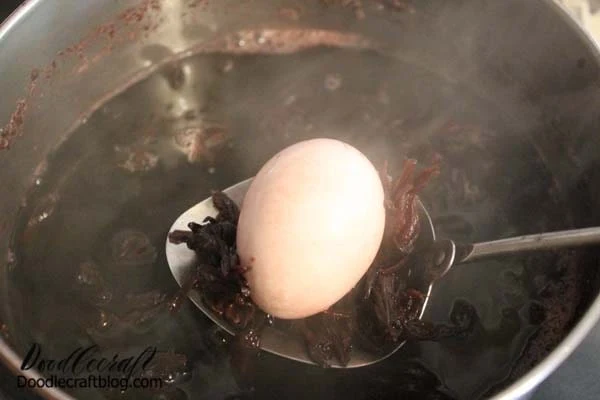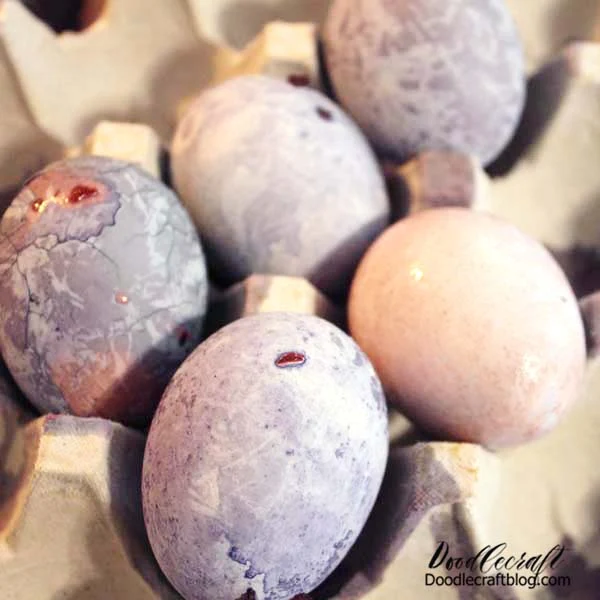How to Dye Easter Eggs Naturally with Hibiscus Flower Tea
Easter is on April 4th this year and I'm so excited! I love to feel the shift away from cold Winter blossoming into Spring! I love painting and decorating eggs for Easter and this year decided to do something natural to dye them blue.
Hibiscus flowers are my most favorite flower and last year we planted 8 plants. The blossoms appear around August and only last one day! I saved all the little blooms that fell off the plant and decided to use them as a natural dye for eggs.
The natural effect is so cool but doesn't really happen until the eggs are left to cool down. Then these cool crystalline formations appear.
This is a great craft to do with the kids. Turn it into a fun school science lesson about dyes and where colors come from. Have them guess what color the eggs will turn using these bright red flowers. Did they guess blue or purple???
I love incorporating crafts into home school curriculum!

This post is part of a fun group of Quick and Easy Easter Crafts, perfect for kids! Click the button above for more fun ideas.
Supplies for Hibiscus Tea Dyed Easter Eggs:
Hibiscus Flowers (or Hibiscus Tea)
Water
White Vinegar
Eggs
Step 1: Prepare the Dye
Begin by boiling the flowers using half the water on the directions. I used 3 cups of flowers and 2 quarts of water. It made a lot of dye!
Then add 1 tablespoon of White Distilled Vinegar per cup of water into the mix. Bring to a boil.
Step 2: Add Eggs
Add eggs directly to the boiling flower water. We boiled 6 eggs, but it could have done much more.
Slowly submerge the eggs to avoid shattering of the shell.
Step 3: Cook Eggs
Cook the eggs for 15 minutes. Then remove from the water to cool.
When removed from the flower water, the eggs look pink. The cool part happens when the eggs are allowed to cool down completely. They turn purple or blue and lines, crystalline patterns and textures appear.
That's it!
The hibiscus dyed eggs would look great with some permanent marker faces or a little painted rainbow!
They are dyed naturally with flowers, so there is no harmful colorants. The egg is perfectly preserved inside the shell, so not even a hint of flower in them. They taste great!
Perfect for Easter egg dying!
Hibiscus flower Easter egg dying is my new favorite way to serve eggs! I love the cool blueish violet colors.

















-min.jpg)








Comments